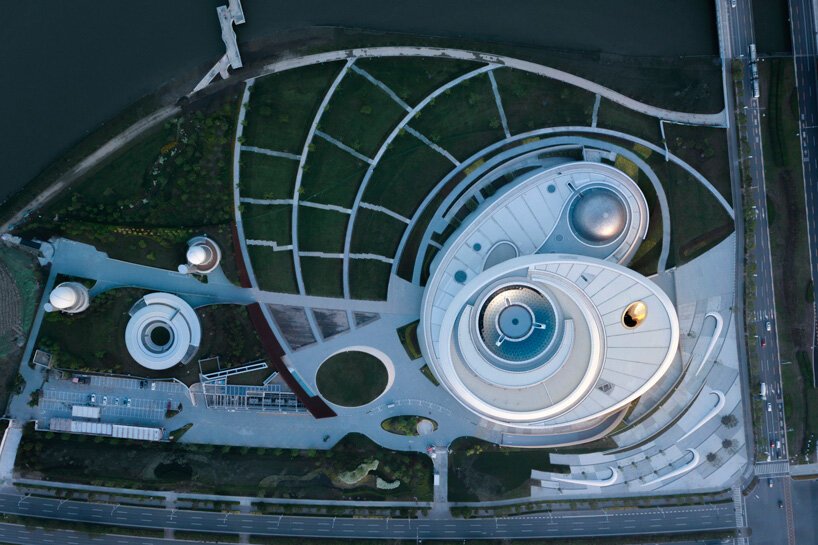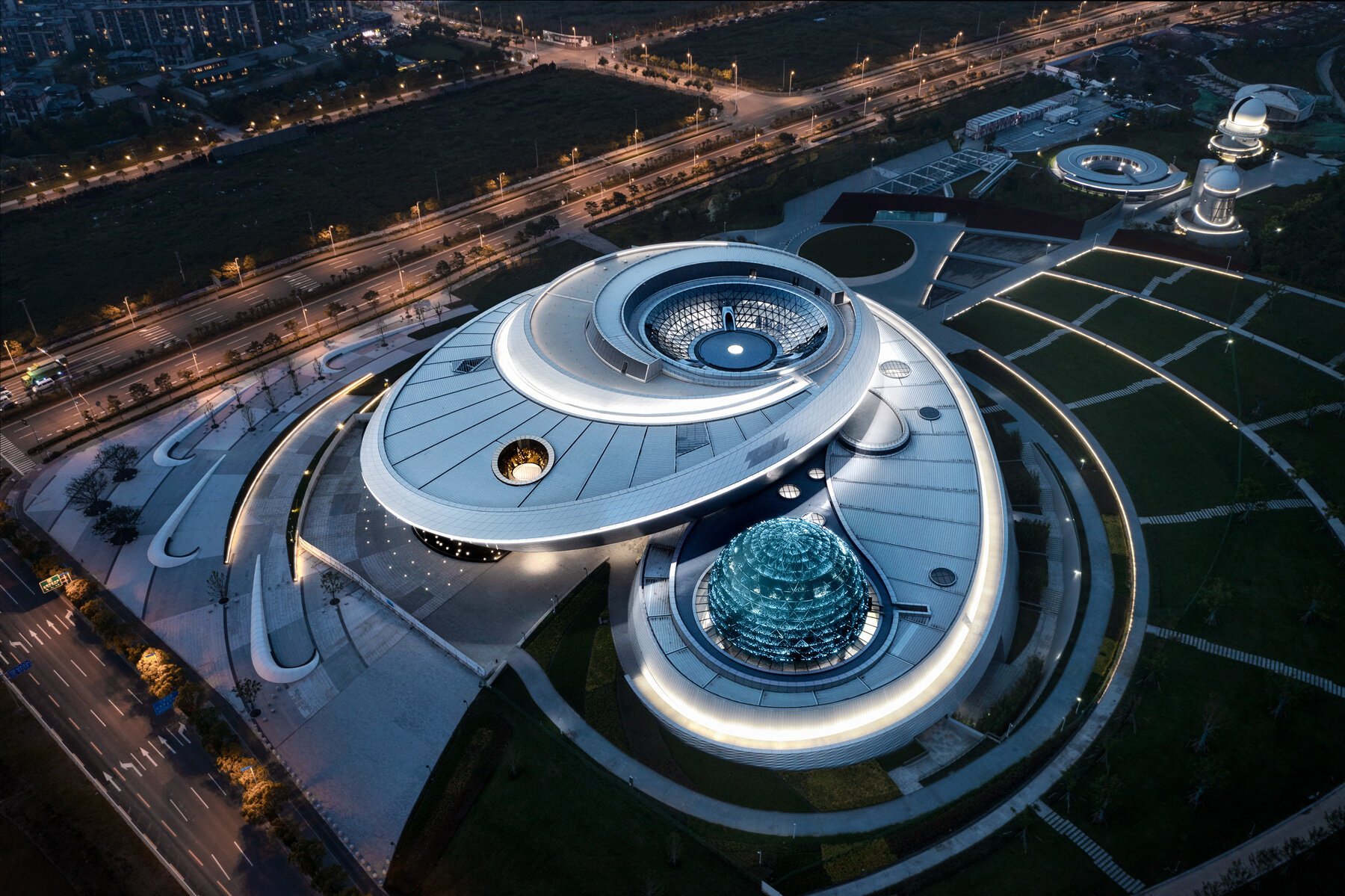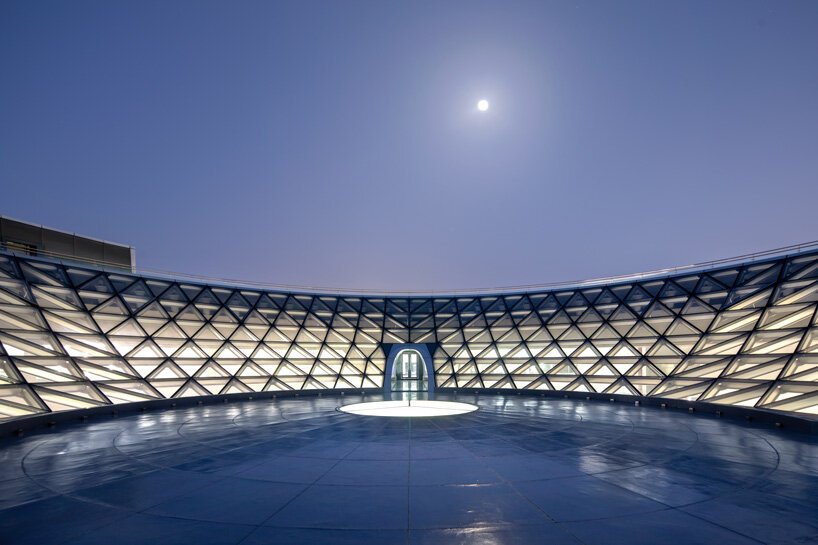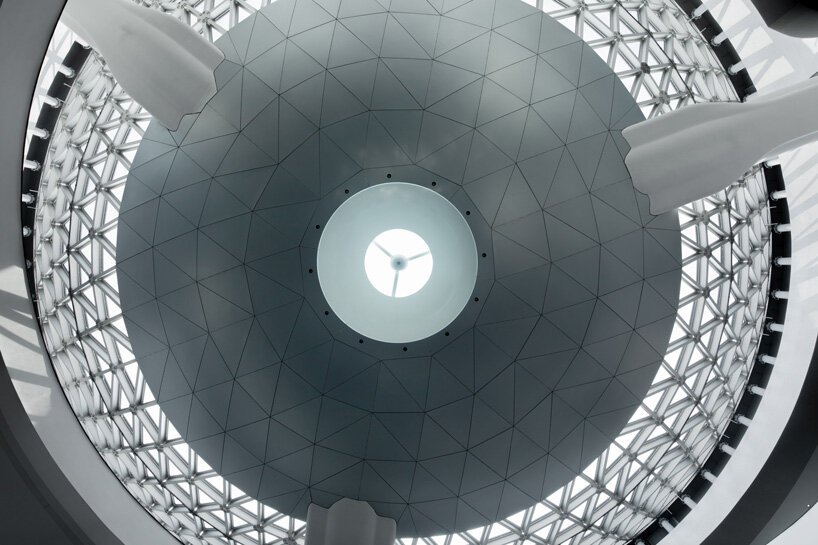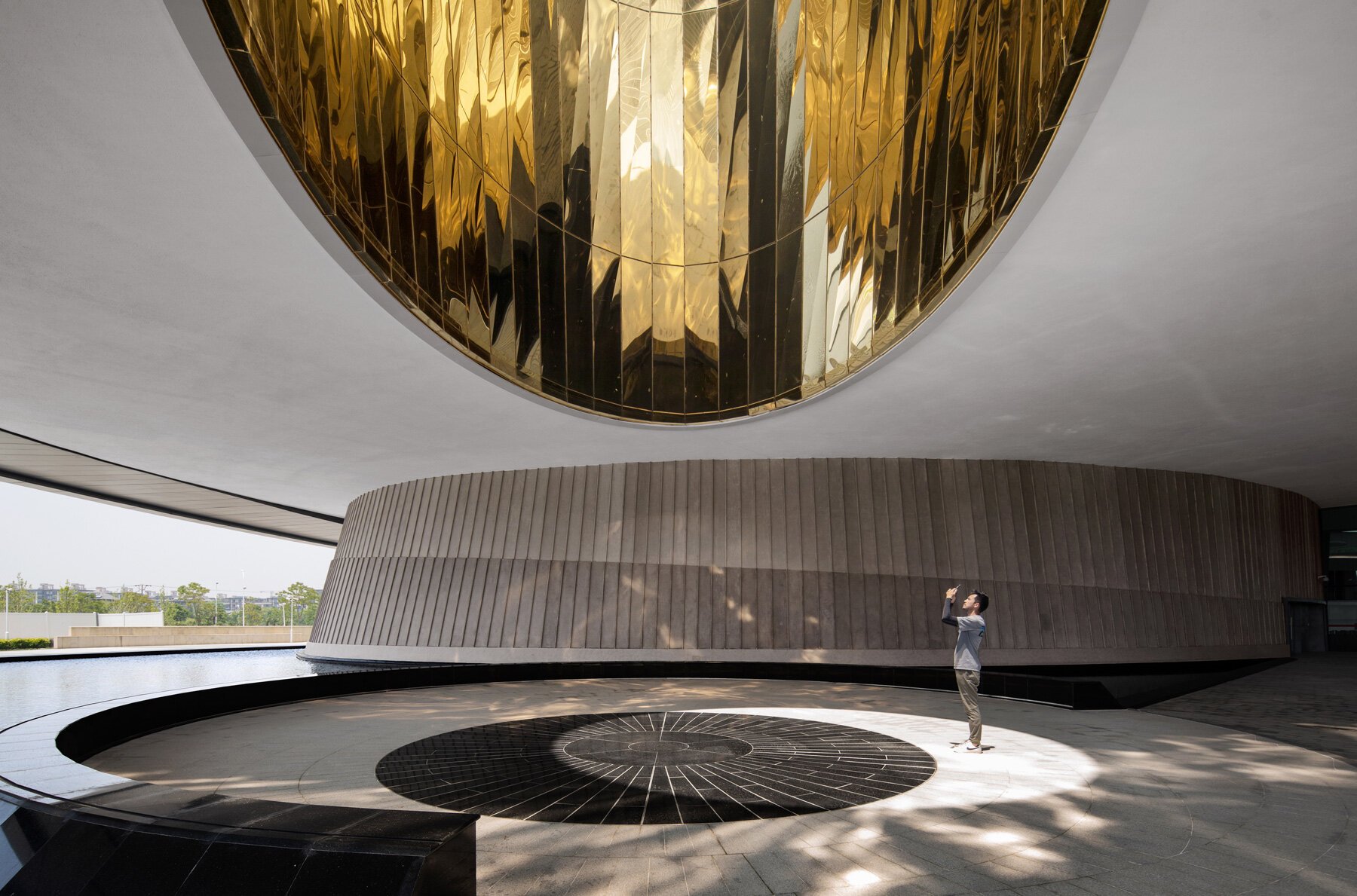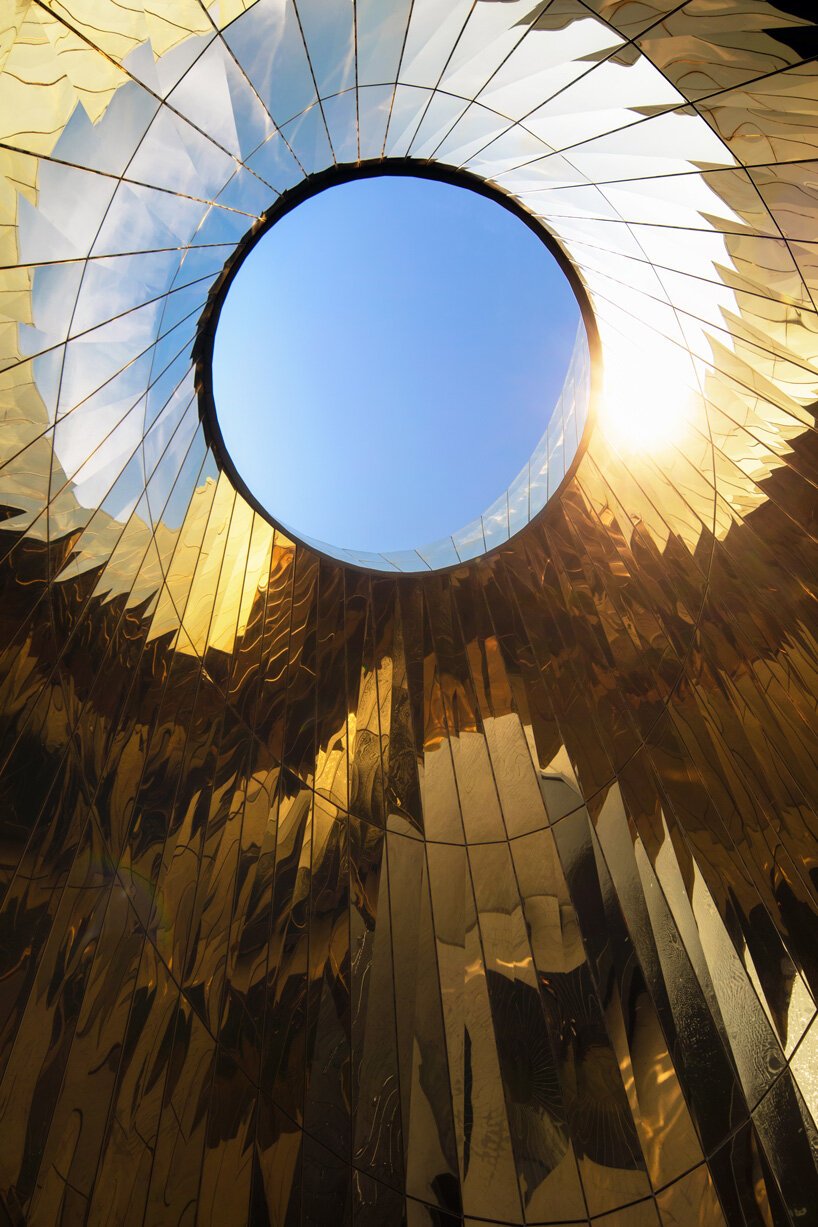Ennead Architects completes Shanghai’s Astronomy Museum which is the current record holder for the world’s largest astronomy museum. Opens on July 18th, 2021, the museum takes place in a green zone in Shanghai, China, with a curvy, flowy design that mimics the motion of stars and planets in galaxies. The futuristic, cosmic design brings space to the earth and grants the visitors a vivid astronomical experience–the circulation around the museum is a storyboard well studied by Ennead Architects.
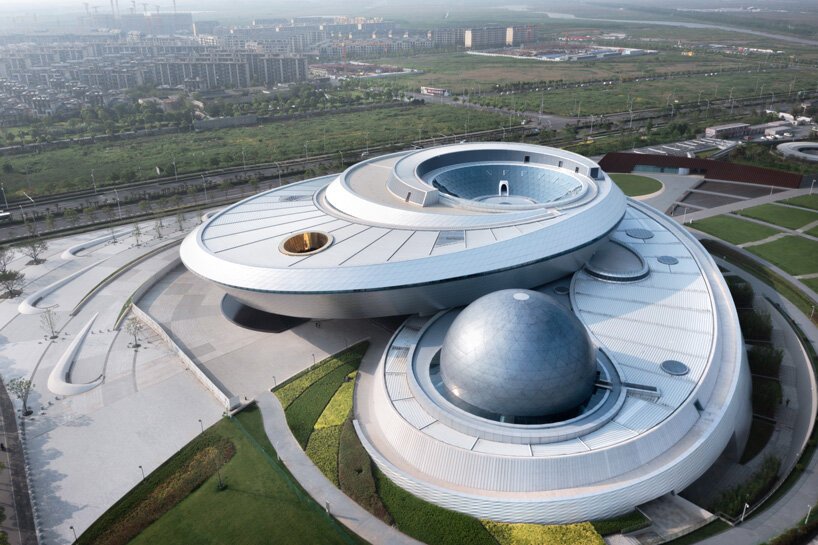
photography by Arch-Exist
“In making this building, we wanted to create a place where the institutional mission is fully enmeshed with an architecture that itself is teaching, and finds form in some of the fundamental principles that shape our universe,” notes Thomas J. Wong, design partner at Ennead Architects. “The big idea of the Shanghai astronomy museum was to infuse a visceral experience of the subject matter into the design and to deliver that before you even enter the building. And at the end of your visit, there is this culminating moment directly with the sky, which is framed and supported by the architecture.”
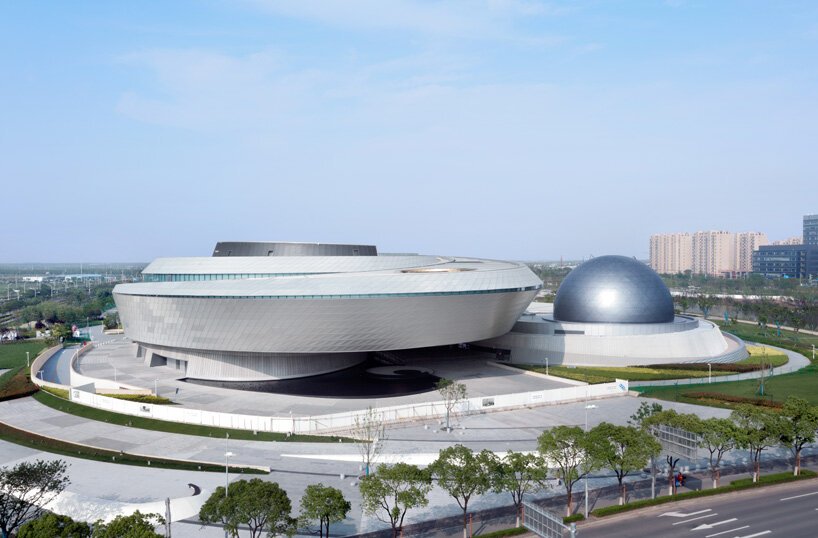
Photography by Arch-Exist
How the elements of the dynamic form of Shanghai’s Astronomy Museum interact with each other is inspired by the classical, unsolvable “three-body problem” in physics–Ennead Architects designed the motion of the geometry to mirror the orbital motion of multiple bodies in solar systems affected by gravity. The geometry, scale, lighting design, and storyboard evoke the senses of the museum visitors and introduces them to a strong relationship with the cosmo.
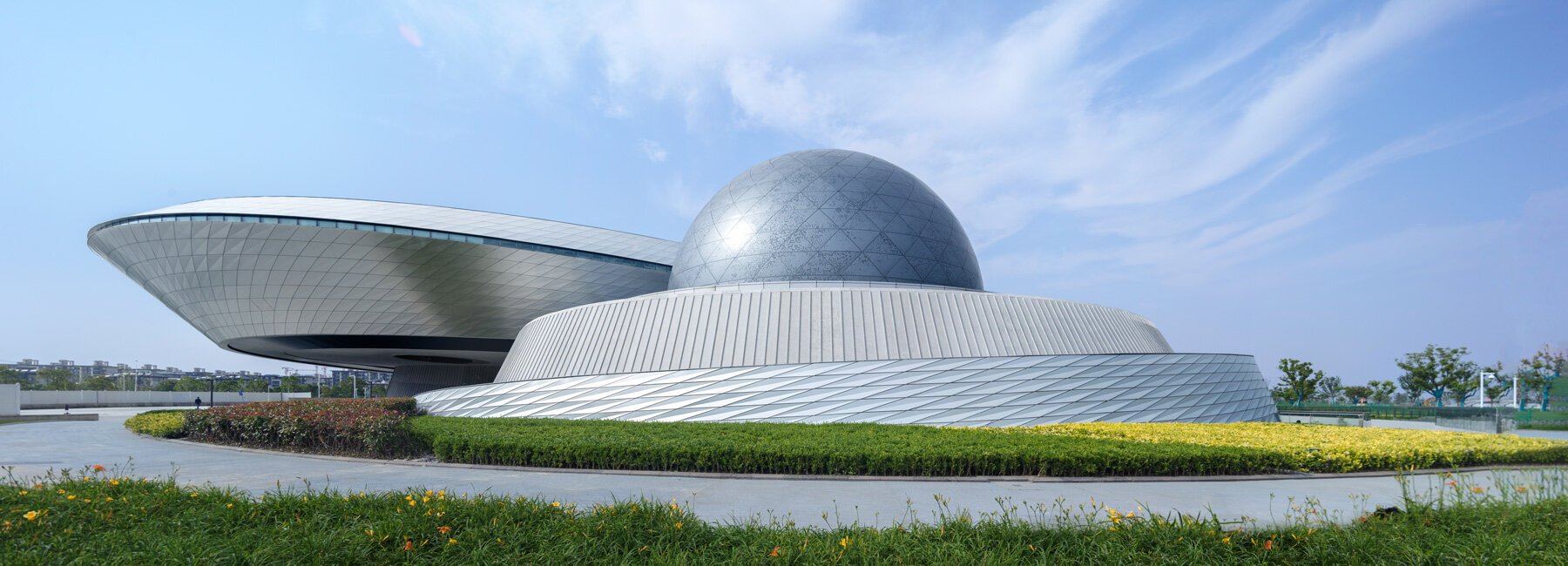
Photography by Arch-Exist
Fully dedicated to studying astronomy, the 420,000 square feet museum features permanent exhibit galleries, temporary exhibit galleries, a digital sky theater, an optical planetarium, education and research center, a solar telescope, a youth observation camp, and an observatory.
“In linking the new Museum to both scientific purpose and to the celestial references of buildings throughout history, the exhibits and architecture will communicate more than scientific content: they will illuminate what it means to be human in a vast and largely unknown universe,” said Thomas Wong.
For the design concept of the museum, Ennead Architects created three fundamental components: The Oculus, The Inverted Dome, and the Sphere–referencing the sun, moon, and stars. All other elements of the building’s envelope and facade appear to be influenced by the gravitational pull of the three main components.
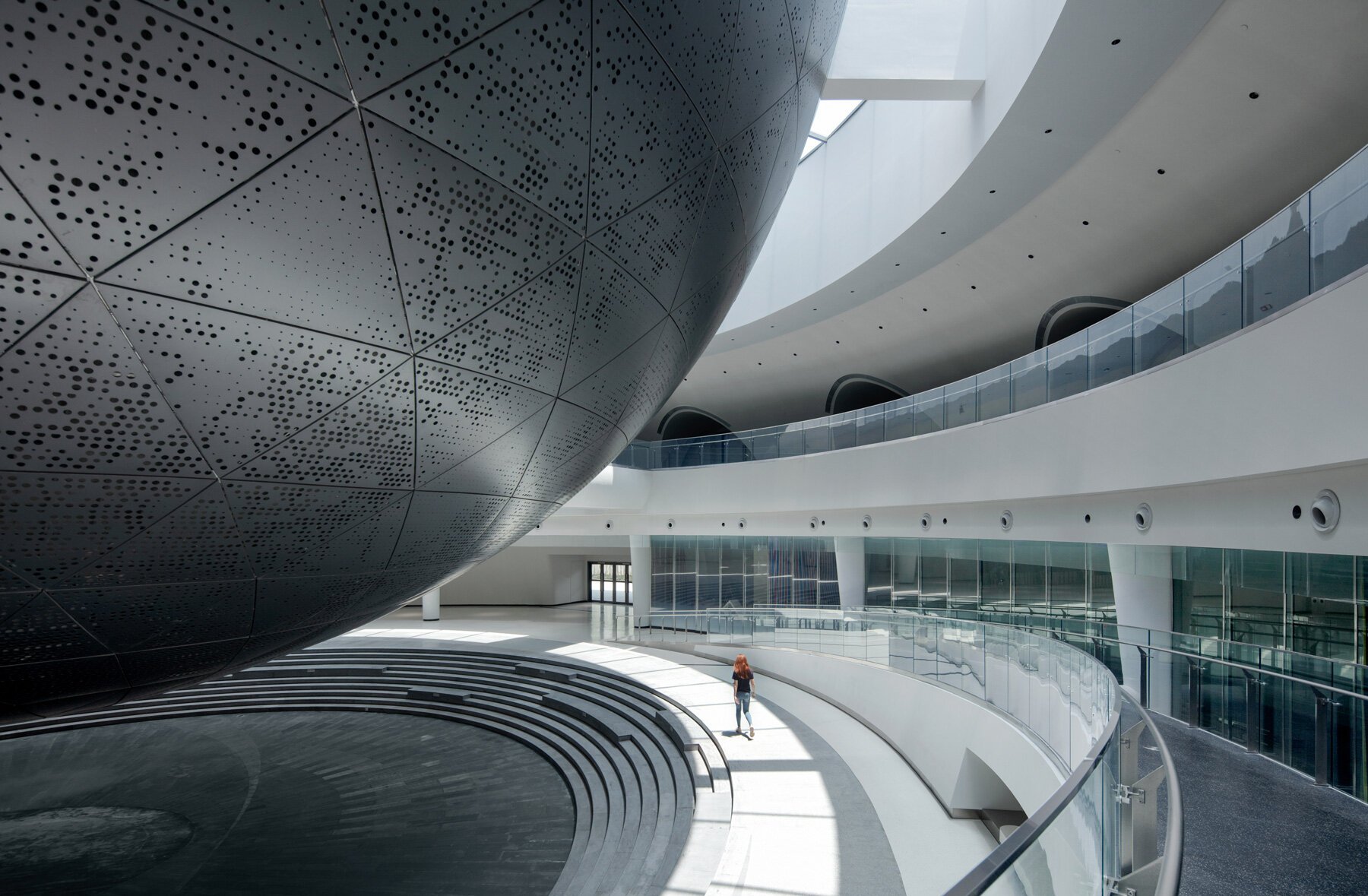
Photography by Arch-Exist
The Oculus is suspended above the main entrance to the museum, it tracks the movement of the earth around the sun; at noon during the summer solstice, a full circle of sunlight forms on the ground upon the entry. The full circle aligns with a circular platform within the museum’s plaza.
In a manner that reminds visitors of how our ancestors used stars to navigate, The Sphere, mirroring the airy, lightweight feeling of the stars, sits on the roof of the lower museum wing and acts as a landmark or reference point for the visitors. The Sphere houses the half-submerged planetarium theatre.
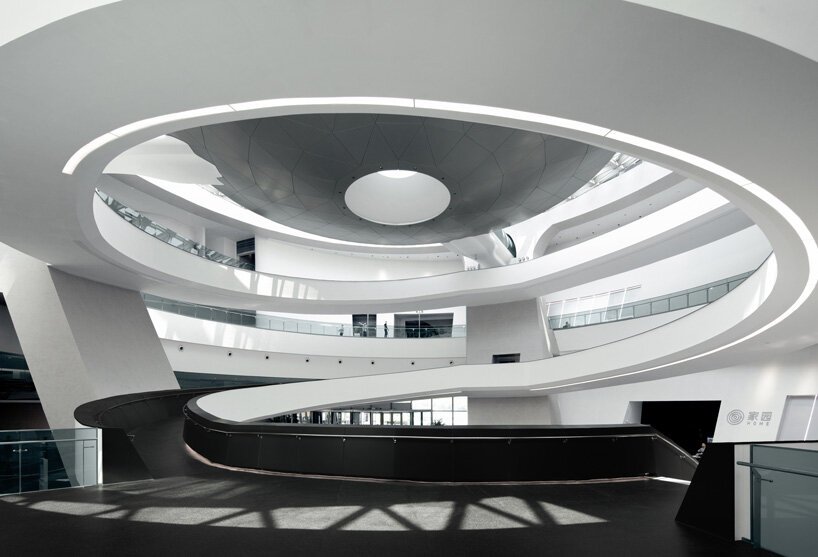
Photography by Arch-Exist
For the third fundamental architectural component of the museum, Ennead Architects designed a large inverted glass structure to be the Inverted Dome. The Inverted Dome is the last point of the museum’s storyboard, where visitors interact directly with the sky, isolated from the noise and chaos of the earth. After that, a 720-degree spiraling ramp takes the visitor under the inverted dome and back to the museum’s exhibits.
Ennead Architects LLP is a New York City-based architectural firm known for its innovative work. The firm performs architecture, master planning, historic preservations, and interior design services. The architects previously designed The Westerland Museum for American Art in Pennsylvania, USA.
